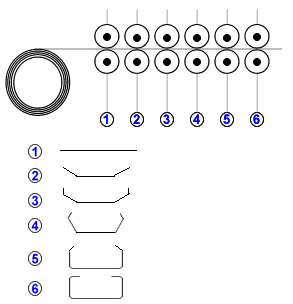Roll forming machines fabricate specific configurations out of long strips of metal, most commonly coiled steel. In most applications, the required cross-section profile of the piece is specifically designed for the machine to bend the metal as necessary. Other than roll forming, these machines perform a number of metalworking duties, including material cutting and roll punching.
Roll forming machines, for the most part, work in a continuous cycle. The material is fed into the machine where it continuously makes its way through the stages of each operation, ending with the completion of a final product.
 |
| Roll Forming Machine |
How Roll Forming Machines Work
A
roll forming machine bends metal at room temperature using a number of stations where fixed rollers both guide the metal and make the necessary bends. As the strip of metal travels through the
roll forming machine, each set of rollers bend the metal a little more than the previous station of rollers.
This progressive method of bending metal ensures that the correct cross-sectional configuration is achieved, while maintaining the cross-sectional area of the work piece. Typically operating at speeds between 30 to 600 feet per minute, roll forming machines are a good choice for manufacturing large quantities of parts or very long pieces.
Roll forming machine are also good for creating precise parts that require very little, if any, finishing work. In most cases, depending upon the material being shaped, the end product features an excellent finish and very fine detail.
Roll Forming Machine Line Basics
The basic roll forming machine has a line that can be separated into four major parts. The first part is the entry section, where the material is loaded. The material is usually inserted in sheet form or fed from a continuous coil. The next section, the station rollers, is where the actual roll forming takes place, where the stations are located, and where the metal shapes as it makes its way through the process. Station rollers not only shape the metal, but are the main driving force of the machine.














